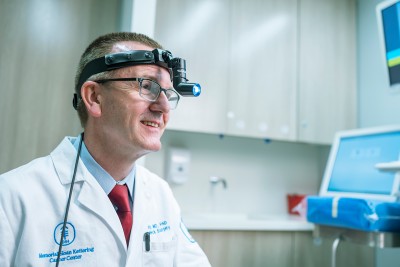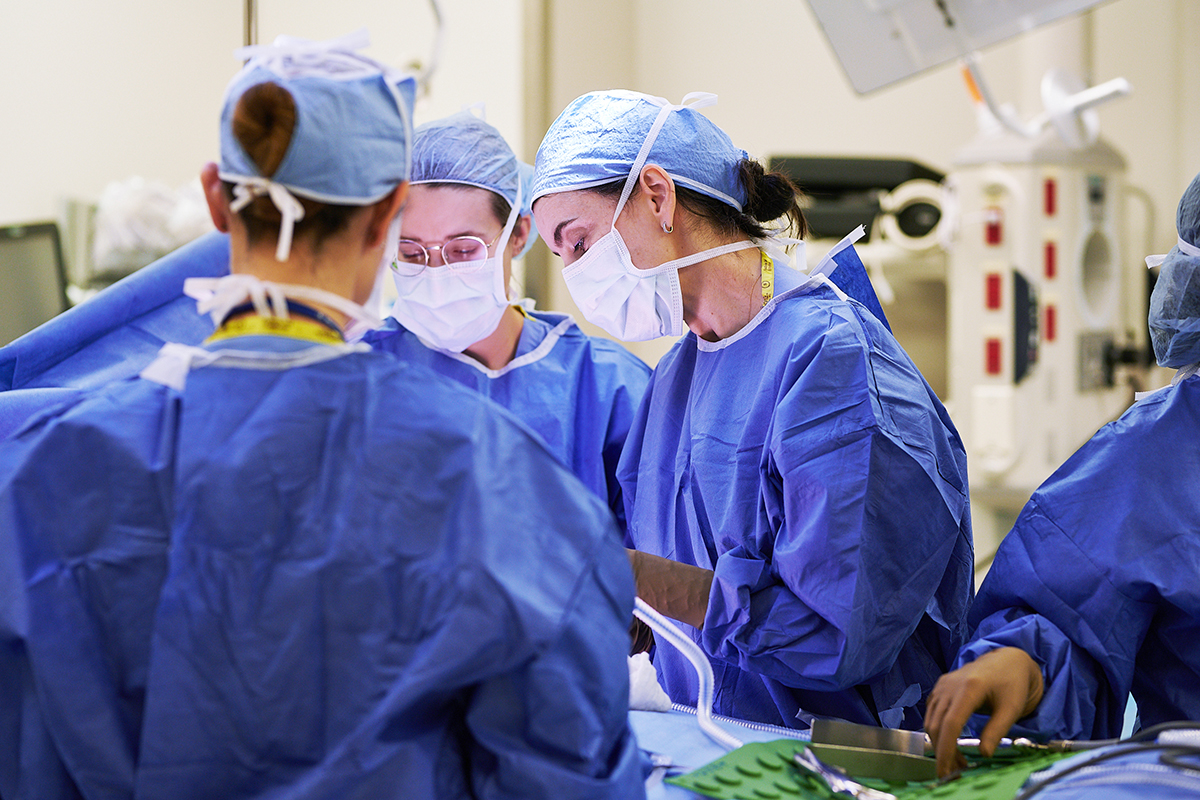
MSK’s parotid gland surgeons, including Ian Ganly, have extensive experience in using precise techniques that help preserve the facial nerve.
For many people with parotid gland tumors, surgery performed by a head and neck surgeon is the main treatment. This operation is called a parotidectomy.
The parotid gland consists of two lobes: the superficial lobe and the deep lobe. Surgery to remove a tumor in the superficial lobe is called a superficial parotidectomy. Surgery to remove a tumor in the deep lobe — or in both the deep and superficial lobes — is called a total parotidectomy. The two lobes are separated by the facial nerve.
Treating parotid gland tumors requires great precision on the part of your surgical team because the facial nerve is nearby. The facial nerve controls your ability to close your eyes, raise your eyebrows, and smile.
Preserving the facial nerve is an important priority when removing a parotid gland tumor. The facial nerve is typically identified and protected during a parotidectomy. However, there is a chance that the nerve may be adversely affected by the tumor itself or by the surgical procedure needed to remove the tumor.
Superficial Parotidectomy
- Your surgeon may recommend a superficial parotidectomy (surgery to remove all or part of the superficial lobe) if the tumor is confined to the superficial lobe of the parotid gland.
- The cut (incision) required to remove the tumor begins at the front of the ear and follows the line down to the neck and under and along the jawline.
- Your surgeon will also remove a rim of healthy tissue around the tumor if it is possible to do so without causing damage to the facial nerve.
Total Parotidectomy
- Your surgeon may recommend a total parotidectomy (surgery to remove the deep lobe and possibly the superficial lobe) if the tumor is confined to the deep lobe or if the cancer is located in both the deep lobe and the superficial lobe.
- The cut (incision) for a total parotidectomy is the same as the one for a superficial parotidectomy.
Lymph Node Removal During Parotidectomy
Parotid gland cancers often spread to the lymph nodes in the neck first. Removing the lymph nodes in the neck (and other nearby tissue) may be done at the same time as the parotidectomy. The goal of this procedure is to remove lymph nodes shown to contain, or that are likely to contain, cancer and to reduce the chance that the cancer may return in the future.
Our surgeons have extensive experience in performing these procedures and in preserving normal structures in the neck to leave minimal effects of surgery. They are currently testing a new optical-imaging approach allowing them to more precisely visualize cancer spread to lymph nodes. The noninvasive technique combines the use of nanoparticles acting as fluorescent probes with a handheld camera that detects light emitted by the particles, creating a high-resolution image showing cancer-cell location. Being able to detect where cancer cells have spread allows our surgeons to remove fewer nodes.
Facial Nerve Monitoring
A parotidectomy requires tremendous precision on the part of your entire surgical team. In order to remove a parotid gland tumor, your surgeon will first need to locate and work around the facial nerve.
The complete removal of your tumor, combined with the preservation of the facial nerve, is a priority of the surgical team at Memorial Sloan Kettering. Our surgeons have extensive experience in using precise surgical techniques that help preserve the facial nerve. In addition, they use the most-advanced facial nerve monitoring technology. It allows them to find the facial nerve during the surgery. This includes the many branches of the facial nerve, which control different parts of the face. This technology helps our surgeons identify and preserve each tiny facial nerve branch.
In some cases, the facial nerve may be temporarily or, very rarely, permanently weakened due to removal of a parotid gland tumor. The risk of facial nerve weakness is directly related to the size, extent, and type of parotid gland tumor.
Treatment for Facial Paralysis (Facial Reanimation)

Our reconstructive surgeons have developed highly specialized techniques for treating facial paralysis so patients with parotid gland tumors can regain movement after treatment.
Loss of facial nerve function related to the treatment of a parotid gland tumor can result in partial or total paralysis on one side of the face. This can greatly impair a person’s ability to make basic movements of the face, such as raising the eyebrows, closing the eyes, or smiling. It can be accompanied by vision loss and, possibly, difficulty eating or speaking.
Our experts have developed highly specialized techniques for treating facial paralysis so people can regain these abilities after treatment. By transferring or transplanting muscles and nerves from other parts of the body or rewiring nerves, our surgeons can restore movement within months. This procedure is known as facial reanimation. It may be done when the tumor is being removed or even years after treatment in some cases.
We also offer an innovative method for facial reanimation called the dual-babysitter technique. It involves rewiring nerves from both the tongue and biting muscle to the facial muscles, in combination with nerve grafts. This approach has helped reawaken muscular function and further improved the ability of people to smile and close their eyes.
We’re available 24 hours a day, 7 days a week


